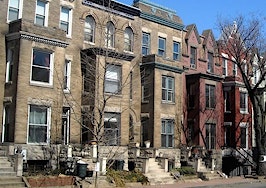Are you set up for success in 2016? Join 2,500 real estate industry leaders Aug. 4-7, 2015, at Inman Connect in San Francisco. Get Connected with the people and ideas that will inspire you and take your business to new heights. Register today and save $100 with code Readers.
Takeaways:
- Quantitative easing by the European Central Bank could result in housing price bubbles in Germany, Norway and the U.K.
- Since 2010, average home prices in Norway have risen by more than 30 percent. In Germany and the U.K., values have risen by nearly 25 percent and 15 percent, respectively.
- The greatest risk of a bubble lies in Norway.
While the U.S. housing market is in recovery mode — with sales activity and home values rising amidst low inventory — the single-family environment in Europe is entering potentially risky territory.
According to Moody’s Analytics, the European Central Bank’s quantitative easing program — a €60 billion a month asset-buying agenda — may result in the resurfacing of housing price bubbles in several countries, namely Germany, Norway and the U.K.
These nations are judged riskiest because of their ultralow interest rates and bond yields, which have fueled rapid house price appreciation and made cash a much greater driver of values.
Since 2010, average home prices in Norway have risen by more than 30 percent. In Germany and the U.K., values have risen by nearly 25 percent and 15 percent, respectively, according to the firm’s research.
In these countries’ major cities, specifically London, Oslo and Munich, properties are becoming increasingly overvalued.
The greatest risk of a bubble lies in Norway.
The nation’s Financial Supervisory Authority recently stated that falling interest rates were pushing the housing market into an upward spiral. Despite the warning, the Norwegian central bank has continued to cut interest rates in a move to prop up the economy.
Germany’s housing market has historically been stable; however, the Bundesbank warned in late 2013 that average German home prices could be overvalued by as much as 10 percent, and by 20 percent in some big cities.
“Growing demand for German properties is leading to overvaluation, especially given the insufficient supply,” Moody’s reported, adding it will take a few years before supply catches up to demand.
The Bank of England has halted its own quantitative easing program, but British home prices are still growing strongly — rising by 5.7 percent in the first five months of this year. It’s worth noting that price rose by 10.4 percent during the same period last year.
Last year, the Bank of England introduced tougher mortgage lending rules; however, Moody’s said that loan standards in Britain are “still relatively loose,” citing the government’s Help to Buy scheme, which subsidizes purchases.
Since the program was introduced in 2013, the number of mortgages with high loan-to-value ratios has risen sharply.








